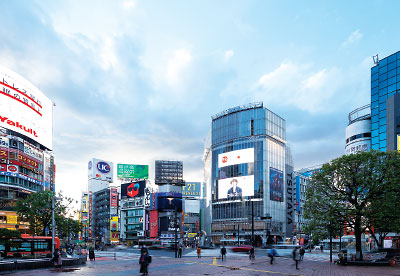Japan Sees Rise in Suicide As COVID-19 Pandemic Continues
Abstract
Japan is seeing a large rise in the number of deaths by suicide. The extent to which similar trends are occurring in many other countries remains to be seen.

Psychiatrists have long warned that the mental health repercussions of the COVID-19 pandemic would be severe and long lasting. Yet due to the lag in reporting suicide data, few countries can immediately assess changes in rates of suicide.
Japan’s National Police Agency, however, reports suicide data on a monthly basis and has revealed some startling trends. Last fall, media outlets such as The Japan Times and The Washington Post began reporting that the country’s suicide rate was increasing. In August, the number of suicides increased by 15.4%, The Japan Times reported, and in October there were 2,153 deaths by suicide, the highest monthly count in more than five years, according to The Washington Post.
“The Japanese data are extremely concerning,” said Christine Moutier, M.D., chief medical officer of the American Foundation for Suicide Prevention. “Japan’s August, September, and October rates superseded what they had been seeing during the earlier period of the pandemic.”
Some places have not seen similar rises in suicide deaths since the pandemic began. A November 2020 study published in The Lancet Psychiatry of real-time suicide data in Queensland, Australia, did not find an overall change in the suicide rate from February to August of last year. An editorial published in November in The BMJ cited studies that found no increases in suicides in Massachusetts; Victoria, Australia; and England in the early months of the pandemic.

There has been a very positive conversation around mental health in the United States since the pandemic began, but it must continue and go further as the pandemic continues, says Christine Moutier, M.D.
In Japan, the suicide rate has especially increased among women, although they represent a smaller proportion of deaths by suicide compared with men. Among women, the rate of suicide between July and October last year increased by nearly 41% over the same period in 2019, The Washington Post reported.
In a study published in Psychiatry Research, the authors identified increased suicide deaths among Japanese women in July, August, and September compared with years past. “Our findings are consistent with scientific evidence that the number of suicides temporarily decreases during times of crisis, but increases after the immediate crisis has passed,” the authors wrote.
Japan’s TELL Lifeline started to see a slight increase in calls when the pandemic began, said Vickie Skorji, the director of the TELL Lifeline, a suicide prevention line for English speakers in Japan. Then, around August, September, and October, there was a huge spike in calls to the lifeline, she said.
Skorji’s description of the stress that the Japanese population has experienced since the pandemic began echoes reports of what people in the United States and many other parts of the world are going through. “Initially, everyone was very concerned about the closure, wondering what it would be like to have kids at home, how people would be able to work from home while caring for kids, what would happen if businesses closed, and, for foreigners in particular, how they could get to their home countries,” she said. “For women, especially, they’re more likely to work part time or contract positions, they’re more likely to take responsibility for the larger portion of childcare when the children are at home, and they’re more likely to experience domestic violence.”
“The pandemic is pressing on known risk factors for suicide, such as rises in suicidal ideation, the economic strain, unemployment, and increases in alcohol consumption, as well as the fear, loss, and grief people are experiencing,” Moutier said. But it is unclear if this country will see a suicide trend similar to what Japan has experienced.
“There’s reason to be concerned about what we’re going to see in the United States, specifically for the populations who are disproportionately impacted by the risk factors,” Moutier said. “But the pandemic is so uneven—for some people, it’s turned their lives upside down, while for others it’s limited to dealing with uncertainty and change, which certainly brings about a level of stress but isn’t as truly devastating as what others have experienced in terms of finances or reoccurrences of preexisting mental health vulnerabilities.”
In an October article in JAMA Psychiatry, Moutier outlined numerous practical policies that could be implemented to enhance suicide prevention during the pandemic. “Increases in suicide rates should not be a foregone conclusion even with the negative effects of the pandemic,” she wrote.
She told Psychiatric News that, as the pandemic continues, it is as important as ever to not be complacent about suicide prevention. “Now that we know how long this has been going on and generally the impact COVID has had, I think ... 2021 will be a pivotal period in terms of suicide risk and prevention,” she said.
In addition to women, Skorji said, she is concerned about suicide risk among men and older adults, as well, as economic frustrations increase while physical distancing requirements persist. Her hope is that, because so many people are experiencing depression and anxiety due to the pandemic, the stigma of seeking care for mental illness will decline. “We all need to understand and respect that our mental health is no different from our physical health,” she said. “Right now, we’re all acknowledging anxiety, and maybe that will let us see that mental health issues aren’t weaknesses, but under the right stresses and circumstances, they can happen to any of us.” ■
“Japan and South Korea See Surge of Suicides Among Young Women, Raising New Questions About Pandemic Stress” is posted here.
“Suicide Spike in Japan Shows Mental Health Toll of COVID-19” is posted here.
“Trends in Suicide in Japan By Gender During the COVID-19 Pandemic, Up to September 2020” is posted here.



